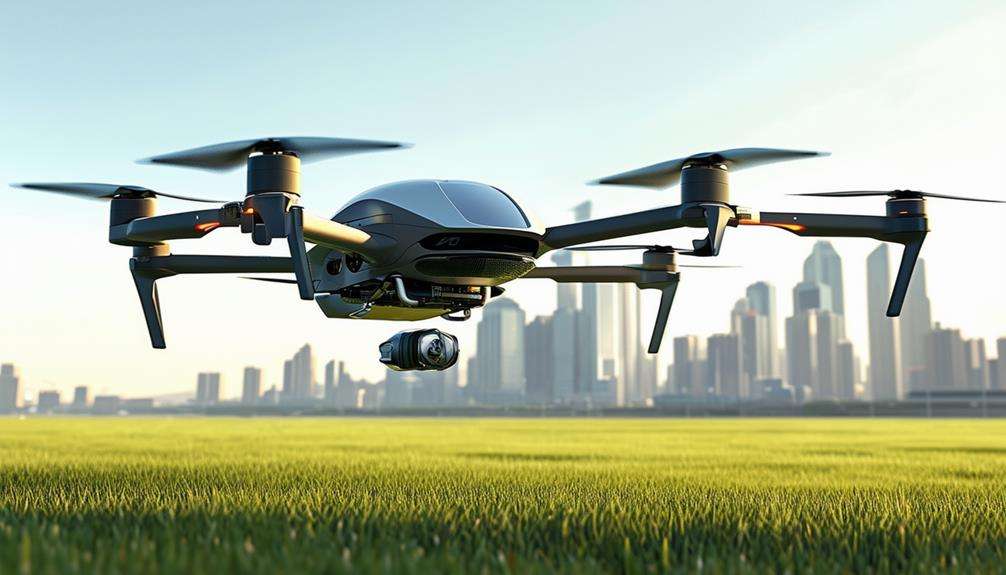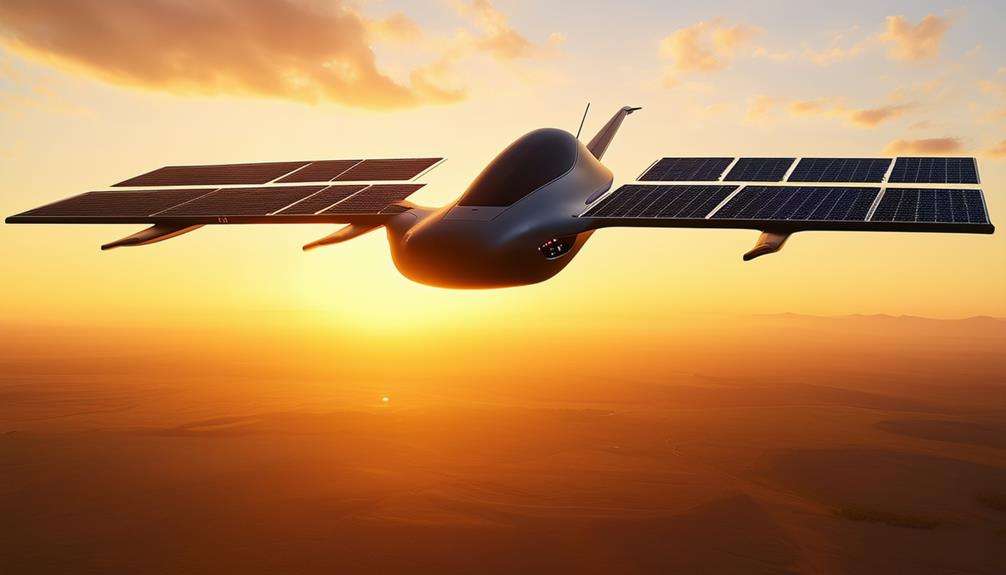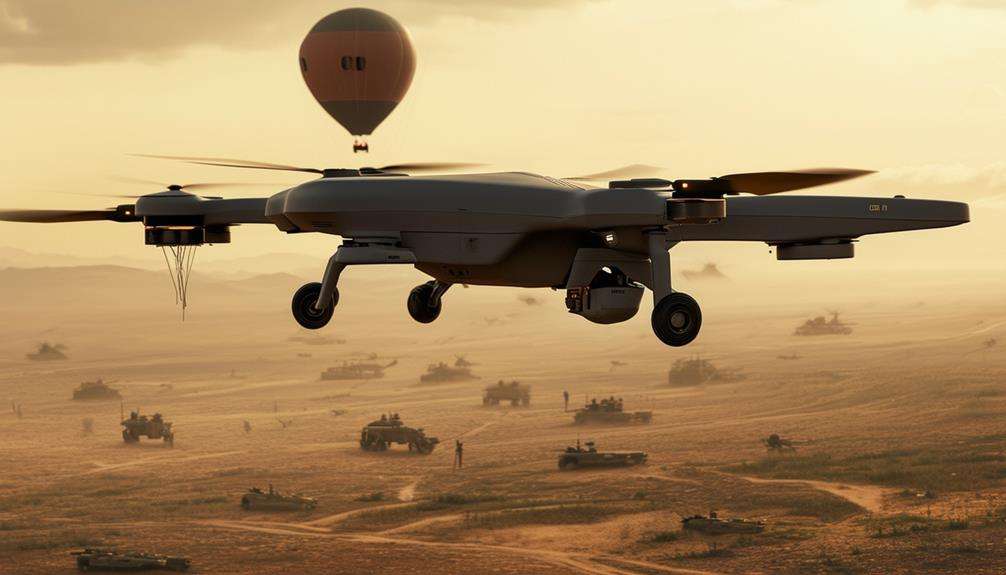The History and Development of Autonomous Drones
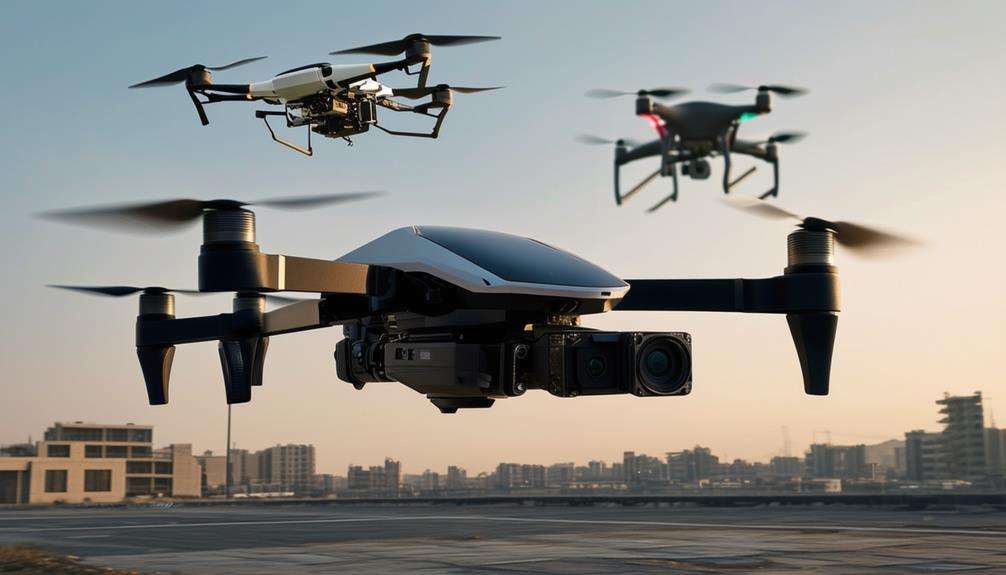
Exploring the history of autonomous drones reveals a journey that began with Lawrence Sperry's pioneering autopilot technology. These early innovations set the stage for significant advancements during both World Wars, where drones started to play crucial roles.
The landscape evolved markedly during the Cold War with the advent of reconnaissance drones like the Ryan Model 147 Lightning Bug. Today, advancements in AI and machine learning have dramatically enhanced drone capabilities. Understanding how we arrived at this point involves recognizing key milestones that have shaped this evolution.
Early Innovations in Autonomy
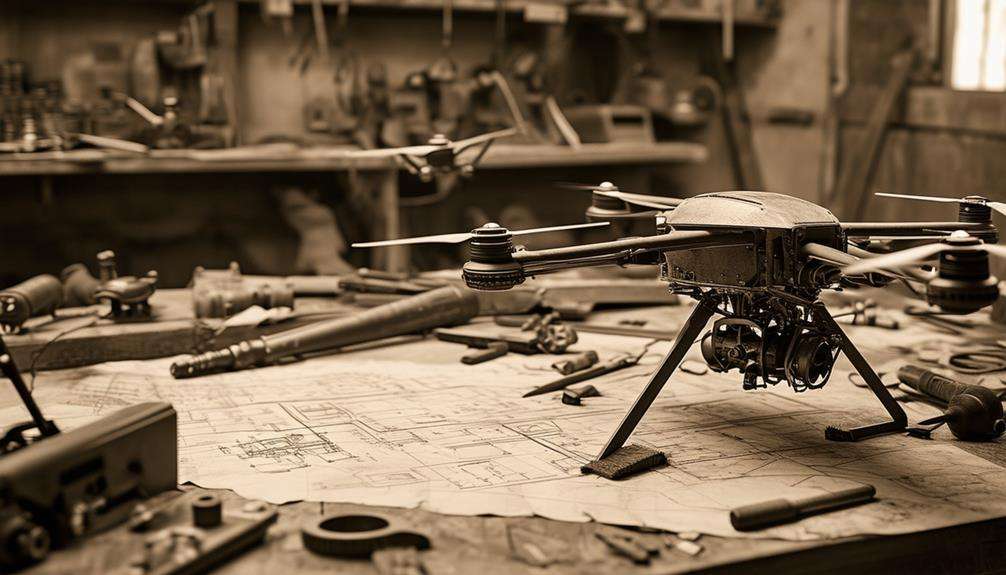
In the early 1910s, Lawrence Sperry's invention of autopilot technology set the stage for the development of autonomous systems. This groundbreaking innovation was a precursor to autonomous drones, which have since revolutionized various fields, especially military applications.
Early innovations in this domain included creations like the Sperry Automatic Airplane and the Kettering Bug. These were among the first attempts to use unmanned aerial vehicles (UAVs) to deliver payloads, showcasing the potential of autopilot technology.
By the 1930s, advancements led to the development of the Curtiss N2C, one of the earliest target drones. This drone demonstrated the efficacy of radio control technology, paving the way for more sophisticated autonomous systems. The 1940s saw further progress with radio-controlled aircraft like the OQ-2, which were primarily used for reconnaissance and military training.
Nazi Germany's TV-guided glide bomb and V1 flying bomb during the late 1930s and 1940s were also significant milestones. These early autonomous drones incorporated TV guidance systems, highlighting the rapid evolution of technology during this period. The foundation laid by these initial innovations has been instrumental in shaping modern autonomous drones.
World War I Beginnings
During World War I, the foundation for autonomous drone technology was laid with Lawrence Sperry's pioneering invention of autopilot systems. Sperry's innovations allowed aircraft to maintain stable flight without human intervention, representing a revolutionary step toward autonomous drones. His 1914 demonstration of a pilotless aircraft marked a significant advancement in this field.
- Autopilot System: Sperry's invention enabled aircraft to maintain stable flight autonomously, showcasing early capabilities of unmanned systems.
- Kettering Bug: Developed by Charles Kettering in collaboration with the U.S. Army, this early pilotless aircraft was designed to carry explosives over enemy lines, highlighting the military potential of unmanned aerial vehicles.
- Reconnaissance Missions: Early autonomous drones were primarily focused on delivering payloads and gathering intelligence.
The Kettering Bug is often regarded as the first operational drone. It demonstrated the feasibility of using pilotless aircraft for military purposes, laying the groundwork for future advancements. The focus during World War I was on enhancing the reliability and effectiveness of these early autonomous systems in military operations. The 1910s were a pivotal period for autonomous drones, setting the stage for more sophisticated developments in subsequent years.
Interwar Developments
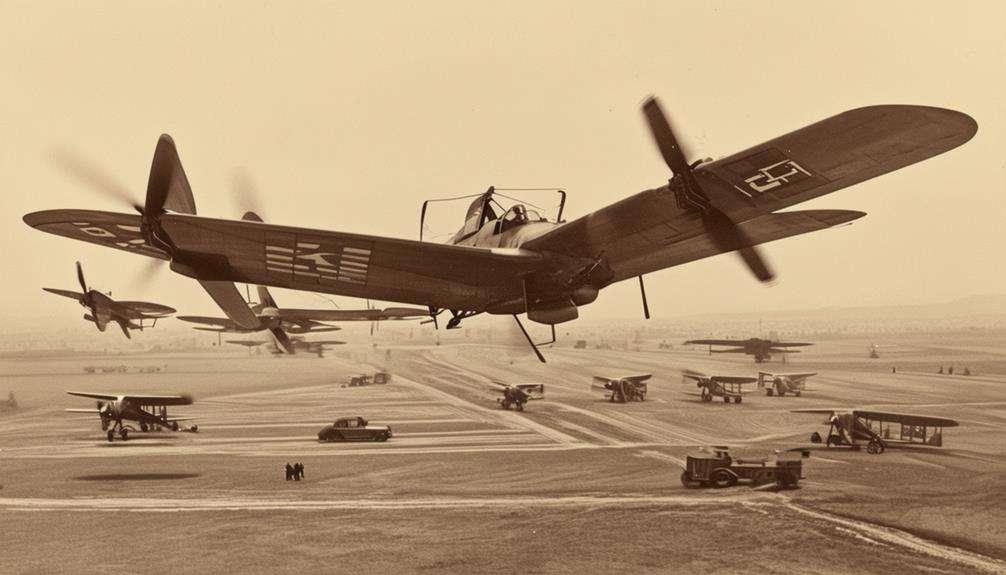
The interwar period saw significant advancements in drone technology, evolving unmanned aerial vehicles (UAVs) from experimental concepts into practical tools for military applications. Engineers converted Standard E-1 aircraft into drones for military training and target practice, signaling a pivotal shift in drone utilization.
Radio-controlled aircraft like the Fairey Queen emerged in the 1930s, providing valuable training for anti-aircraft gunners and enhancing military preparedness. Hungarian scientist Tihanyi's work on television guidance during this period highlighted the potential of remote piloting, setting the stage for future innovations.
Additionally, early cruise missile testing, such as the Royal Navy's Larynx, demonstrated the offensive capabilities of unmanned vehicles. The development of the Hewitt-Sperry Automatic Airplane, a notable radio-controlled aircraft, further advanced drone technology.
World War II Advances
World War II significantly advanced drone technology, with innovations such as the jet-powered Ryan Firebee B1 revolutionizing military applications. Advances in radio control technology enabled UAVs to be used for reconnaissance and military training.
- The Army Air Forces (USAAF) made extensive use of target drones, marking the initial large-scale deployment of such technology.
- The V-1 flying bomb, developed by Germany, was a precursor to modern cruise missiles and demonstrated the destructive potential of unmanned systems.
- The De Havilland Queen Bee, an early radio-controlled target drone used by the British, set the stage for more advanced UAVs.
- Reconnaissance drones like the Ryan Model 147 played pivotal roles in intelligence gathering, laying the foundation for future spy drones.
These advancements collectively marked a significant leap in drone technology, setting the stage for future innovations in autonomous flight.
Cold War Reconnaissance
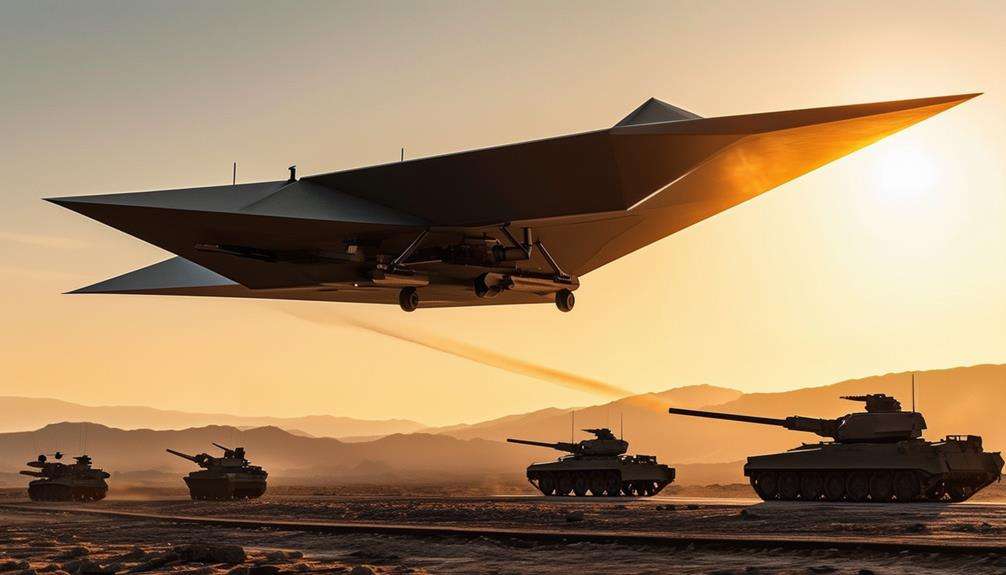
During the Cold War, reconnaissance drones like the Ryan Model 147 Lightning Bug represented a significant advancement in intelligence gathering, building on World War II technologies. These drones played a crucial role in military surveillance, transforming the collection and transmission of intelligence.
Extensively deployed by the USAF, the Ryan Model 147 Lightning Bug conducted over 3,400 reconnaissance missions over North Vietnam. The drones' effectiveness stemmed from their innovative launch and recovery methods. They were launched from modified DC-130A Hercules transport aircraft and, upon mission completion, were recovered by helicopters using parachutes. This approach minimized risks to human pilots and enhanced operational safety.
Reconnaissance drones like the Ryan Model 147 Lightning Bug provided real-time data transmission, offering military leaders timely and accurate information. The ability to gather intelligence without endangering human lives marked a significant leap in military strategy. These drones redefined the battlefield, becoming indispensable tools during Cold War conflicts. Consequently, the use of reconnaissance drones surged, setting a new standard for military surveillance and intelligence gathering during this period.
Modern Military Drones
Modern military drones, such as the MQ-1 Predator and MQ-9 Reaper, have revolutionized warfare through advanced surveillance and precision strike capabilities. These drones leverage artificial intelligence and autonomous technologies to gather critical intelligence and execute missions with minimal human intervention. Besides enhancing military operations, these advancements have significant implications for civilian sectors, demonstrating their wide-ranging impact.
Advanced Surveillance Capabilities
Modern military drones, such as the MQ-1 Predator and MQ-9 Reaper, have fundamentally transformed warfare through their unparalleled surveillance and precision strike capabilities. These drones excel in real-time data transmission and intelligence gathering, making them indispensable in conflict zones. Their endurance allows for prolonged missions, ensuring continuous monitoring and rapid response.
Equipped with advanced surveillance systems, these drones can:
- Monitor vast areas: They cover extensive regions, identifying threats and movements.
- Relay real-time data: Instant data transmission keeps ground forces updated.
- Enhance intelligence gathering: High-resolution cameras and sensors collect crucial information.
The combination of these features means drones can be deployed for diverse military operations, providing a strategic advantage. Their presence in conflict zones has revolutionized intelligence gathering, allowing for more precise and informed decision-making. Moreover, their ability to perform precision strikes ensures that targets are neutralized with minimal collateral damage.
In essence, modern military drones offer a blend of advanced surveillance and strike capabilities, playing a pivotal role in maintaining security and operational efficiency. Their integration into military operations underscores their critical importance in contemporary warfare.
Precision Strike Technology
Equipped with precision strike capabilities, military drones like the MQ-1 Predator and MQ-9 Reaper can execute targeted operations with exceptional accuracy. These modern military drones have revolutionized warfare by offering endurance, precision, and versatility in mission execution. The MQ-1 Predator and MQ-9 Reaper exemplify how precision strike technology can be effectively utilized in combat scenarios.
A key feature of these drones is their real-time data transmission capabilities, which allow operators to receive immediate feedback. This enhances situational awareness and enables informed decision-making on the battlefield, significantly improving the effectiveness of military operations. This ensures that targets are accurately identified and engaged with minimal collateral damage.
While the development of AI and machine learning is paving the way for autonomous decision-making, the current focus remains on the operator's ability to control these drones with precision. The combination of advanced sensors, real-time data transmission, and precision strike technology makes the MQ-1 Predator and MQ-9 Reaper formidable tools in modern military strategy. These capabilities highlight the transformative impact military drones have had on warfare, setting new standards for precision and efficiency.
AI and Autonomy
Leveraging advancements in AI and autonomy, military drones are now capable of performing complex missions with minimal human intervention. Modern systems like the MQ-1 Predator and MQ-9 Reaper have revolutionized warfare. With AI integration and machine learning, these autonomous drones can analyze vast amounts of data in real-time, making split-second decisions that enhance mission effectiveness and safety.
Consider these new possibilities:
- Augmented Surveillance: AI-driven drones can monitor extensive areas, identifying threats faster and more accurately than human operators.
- Precise Targeting: Drone autonomy enables accurate strikes, reducing collateral damage and increasing mission success.
- Future Applications: Ongoing advancements in AI, energy storage, and propulsion systems promise even more sophisticated and reliable drones.
With AI integration, these drones offer extensive capabilities beyond traditional remote control. They can adapt to changing environments, predict potential threats, and execute complex tasks without constant human oversight. This level of autonomy not only boosts operational efficiency but also frees up human resources for other critical tasks.
As technology evolves, future applications of autonomous drones will become even more diverse and crucial in both military and civilian sectors, paving the way for innovative solutions to global challenges.
AI and Machine Learning
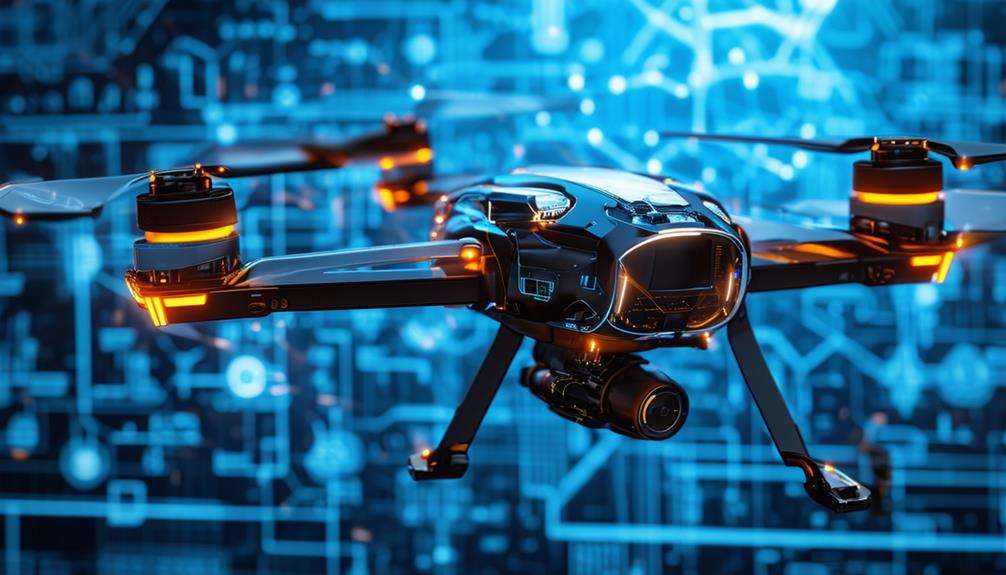
In the context of AI and machine learning for autonomous drones, it's essential to consider the importance of:
- Training data quality
- Real-time decision-making
- Adaptive learning algorithms
These technologies empower drones to interpret complex data, make intelligent decisions instantaneously, and continuously enhance their capabilities.
Training Data Essentials
High-quality training data serves as the foundation for AI and machine learning algorithms, enabling drones to autonomously identify and classify objects with precision. When working with drones, the importance of annotated training data can't be overstated. By providing labeled images of various objects, you assist machine learning models in understanding and recognizing specific features. This is crucial for drones to perform tasks such as obstacle avoidance and achieving precise landings during autonomous flights.
To understand the essentials of training data, consider the following points:
- Diverse datasets: Ensure your training data is varied and representative to help drones navigate different environments effectively.
- Annotation precision: Accurately labeled training data enhances the accuracy of object detection and classification.
- Continuous updates: Regularly updating your training data ensures that drones remain capable of handling evolving scenarios and environments.
Real-time Decision Making
Real-time decision-making powered by AI and machine learning transforms drones into responsive and intelligent agents capable of autonomously navigating complex environments. Equipped with advanced AI algorithms, these drones can analyze incoming data in real time, enabling them to detect and respond to changing environmental conditions or unexpected obstacles instantly.
Machine learning enhances these real-time decisions through continuous data input and algorithm refinement. This allows drones to optimize their flight paths, avoiding collisions and effectively navigating dynamic environments. For instance, a drone flying through a forest must constantly adjust its path to avoid trees and branches while maintaining its course. AI algorithms enable it to do so with remarkable precision.
Incorporating real-time decision-making capabilities into drones significantly boosts their efficiency and effectiveness across various applications, from search and rescue missions to agricultural monitoring. By enabling drones to operate with increased autonomy and intelligence, this technology revolutionizes task performance in multiple industries. With AI and machine learning at the core, autonomous drones are set to redefine real-time operational scenarios.
Continuous Learning Algorithms
Continuous learning algorithms in drones, powered by advancements in AI and machine learning, enable these devices to adapt swiftly and autonomously to dynamic environments. These algorithms allow drones to analyze data, learn from experiences, and improve decision-making processes without human intervention.
Imagine your drone optimizing flight paths, avoiding obstacles, and enhancing operational efficiency all on its own. Here's how continuous learning algorithms make it possible:
- Autonomous Navigation: Drones can navigate complex environments by recognizing and reacting to objects and changes in real-time, ensuring safe and efficient operations.
- Operational Efficiency: Continuous learning enhances efficiency, enabling drones to complete tasks faster and with greater precision, thereby maximizing productivity.
- Adaptability: Drones can learn from each mission, continuously improving their performance and adapting to new challenges seamlessly.
The integration of AI and machine learning allows drones to perform intricate tasks, from object recognition to sophisticated autonomous navigation. By continuously learning and adapting, these drones not only become smarter but also more reliable and efficient. This technological evolution is paving the way for advanced applications across various industries, transforming how we utilize drone technology. Whether for delivery services, surveillance, or agriculture, continuous learning algorithms are revolutionizing the capabilities and impact of drones.
Conclusion
You have journeyed through the intriguing evolution of autonomous drones, from Sperry's early autopilot systems to today's advanced AI-driven technologies. These innovations have consistently reshaped military strategy and technology.
Each period brought significant advancements, underscoring that the pursuit of autonomy in flight is ongoing. With AI and machine learning at the forefront, the future of drones promises even more groundbreaking developments. Stay tuned, as this story is just beginning.

